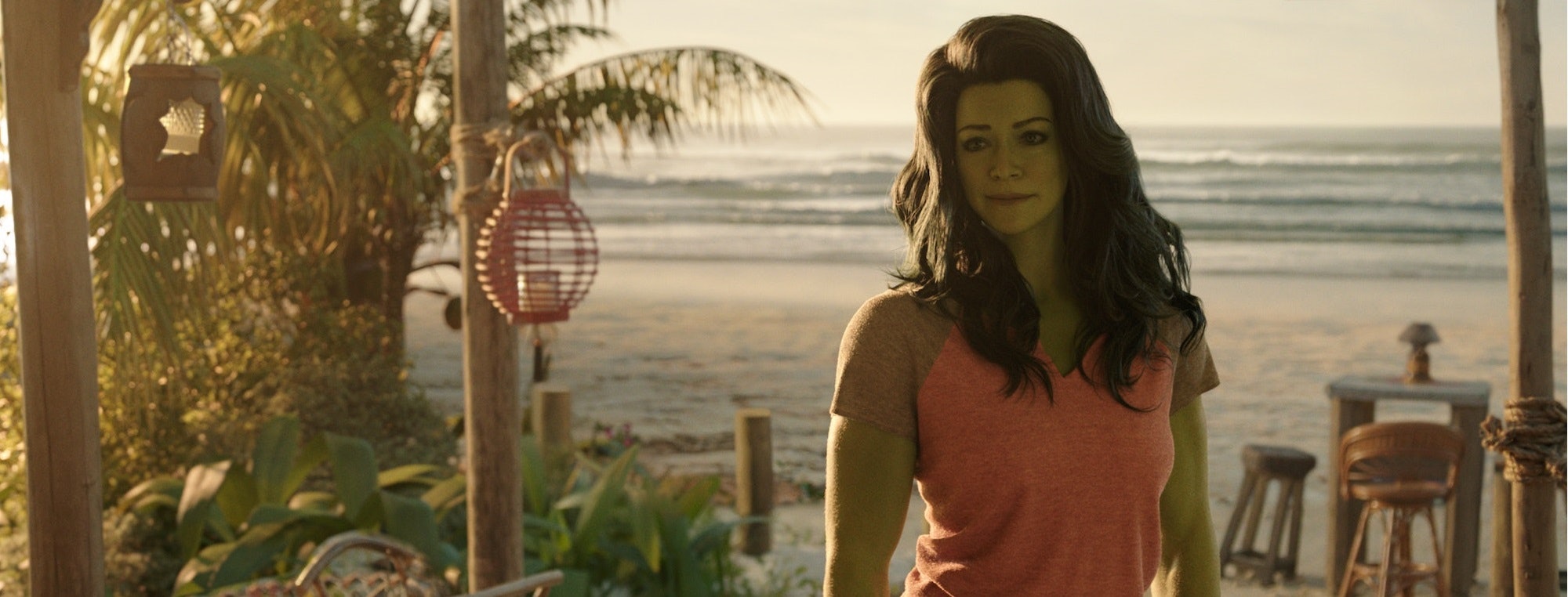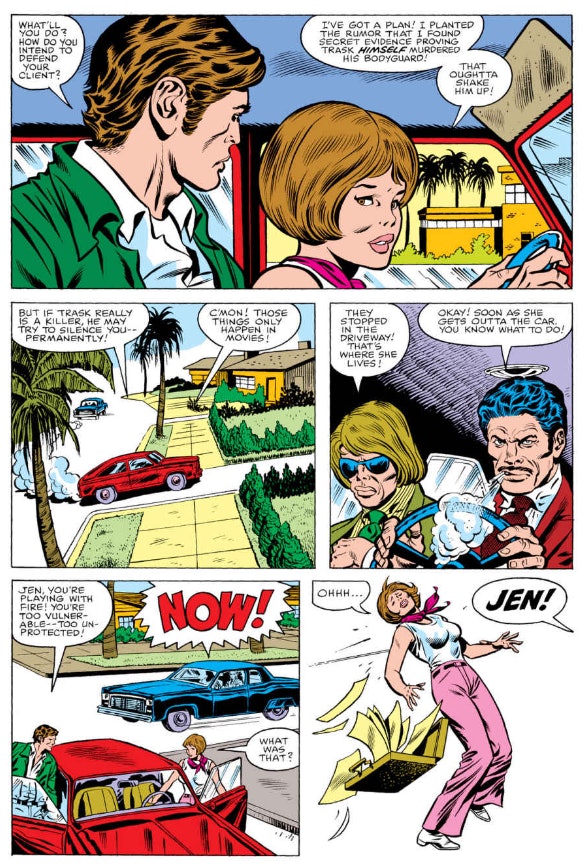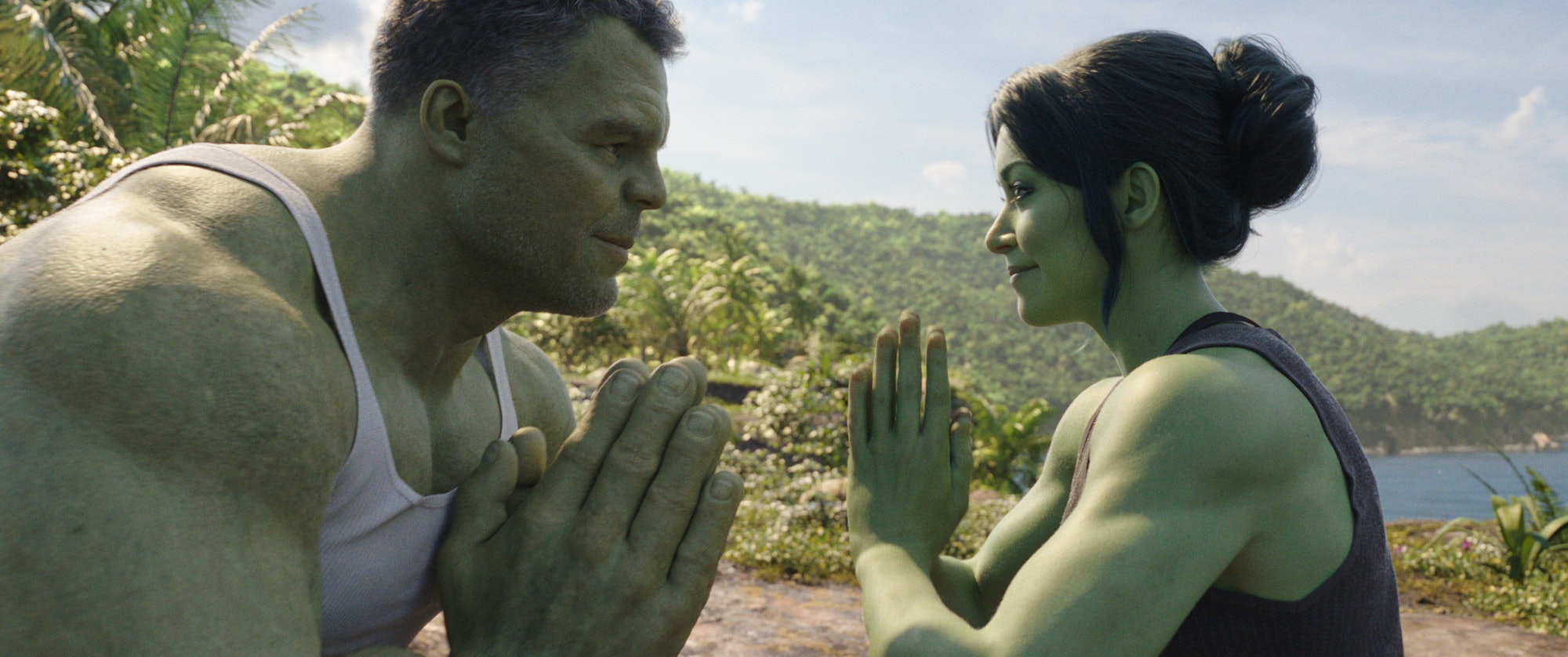
The Marvel Cinematic Universe is full of heroes who emerge out of familiar backstories.
Peter Parker, of course, was bitten by a radioactive spider. Captain America was a puny private injected with the Super Soldier serum. A toxic spill blinded Daredevil.
But not every MCU hero keeps their comic book story intact. In the case of She-Hulk, an origin involving a mafia hit created structural problems and clashed philosophically with the show’s tone.
“There were a couple of reasons for making the changes,” Jessica Gao, head writer of She-Hulk: Attorney At Law, tells Inverse. “The heads of Marvel specifically didn’t want to do a mob hit. I think it was because it didn’t feel like it vibed with the show.”
There are more reasons Gao’s team gave attorney Jennifer Walters a new origin, but let’s review first. How did Jennifer become She-Hulk in the comics?

Jennifer Walters made her debut in 1979’s The Savage She-Hulk #1. Behind the scenes, Marvel wanted a “lady Hulk” ready in case the popular Incredible Hulk TV show could fuel a female spin-off. Created by Stan Lee and John Buscema, Jennifer Walters is introduced as a mousy, physically diminutive daughter of a Los Angeles sheriff, who’s made an enemy of crime boss Nicholas Trask. Trask puts a hit on Jennifer’s dad, and Jennifer is caught in the crossfire.
Conveniently, Bruce Banner was on the scene. Hoping to save Jennifer, Bruce gives her a blood transfusion. But because Bruce’s blood is full of gamma radiation, Jennifer turns into the She-Hulk.
It’s a simple backstory that, in theory, could have been done in She-Hulk: Attorney At Law. But a mob hit didn’t fit the scope that Marvel wanted She-Hulk to encompass.

It also just didn’t interest the writers. “You would have to set up a ton of backstory,” Gao says. “You can’t just drop that in. We really wanted to get going, we didn’t want to spend half an hour setting up why this happened.”
For Gao and the writers, the transformation itself is more compelling than the setup. “The interesting part for us was watching this woman deal with all this and try to process it.”
The writers came up with a new origin for Jennifer that still keeps the broad strokes. In place of a mafia hit there’s now a Sakarrian warship, which appears out of nowhere to attack Bruce Banner (Mark Ruffalo). The resulting car accident causes Bruce’s blood to mix with Jennifer’s wounds, allowing Bruce’s gamma radiation to infect her.
Banner played a serious role in getting the writers to consider a new origin. He’s undergone a philosophical transformation throughout Mark Ruffalo’s many MCU appearances, which Gao says would prompt Bruce to never willingly share his unique blood.
“For me, it just didn’t ring true for the Bruce Banner we know,” Gao says.
“We’ve watched him over the course of a decade, and he’s struggled with this. He’s tormented by this. He saw it as a curse. It took him a decade to just get to a place of balance and acceptance. He never viewed it as a great thing. It forced him to not even have romantic relationships. I just can’t imagine Bruce would willingly choose to give what he saw as a curse.”

A critical moment in the show’s first episode, where Jennifer lectures Bruce on the alienation caused by his powers, underlines how much of a burden it feels to be a Hulk. It’s a scene that helps She-Hulk successfully introduce the character comic book fans love. The specifics of how she became She-Hulk may have changed, but the demands of the MCU necessitate adaptation. Besides, how else will She-Hulk set the stage for the Hulk’s role in Phase 6?
As for She-Hulk’s writers, changing the origin allowed them to refocus Jennifer’s rage somewhere more productive. “We were like, ‘What is the fastest way to get the accident out of the way?’” Gao says. “Let’s focus on the things we actually care about.”
She-Hulk: Attorney At Law streams new episodes Thursdays on Disney+.







